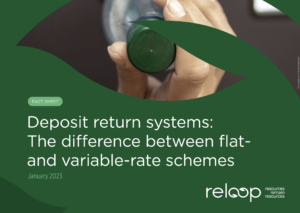When it comes to the design of a new #DepositReturnSystem (DRS) one of the key topics of debate is whether the system should adopt a flat-rate (sometimes called ‘fixed-rate) or variable deposit fee.
In a flat-rate DRS, all drinks containers – regardless of beverage type, volume, or container material – are subject to the same deposit. By contrast, a variable-rate system, is one where deposit levels can vary by container volume or material type, or both. In some variable-rate systems, deposit levels can also vary by beverage type.
In this new fact sheet, we provide an overview of which jurisdictions use flat- vs. variable-rate deposits and how they perform. We also offer our thoughts on which one is better (*hint: we believe that both types of systems are capable of producing high rates of return, and that the most important thing is that policymakers set a minimum deposit level(s) that is meaningful and effective).
-

Deposit return systems:The difference between flat-and variable-rate schemes
When it comes to the design of a new DRS, one of the key topics of debate is whether the system should adopt a flat-rate (sometimes called ‘fixed-rate) or variable deposit fee.